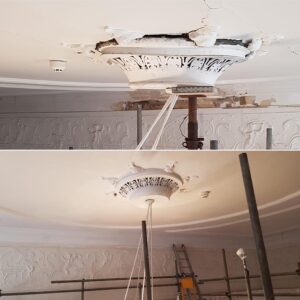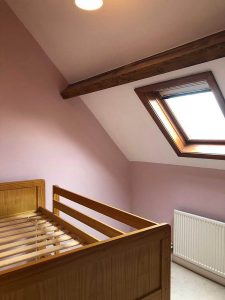Lime Plastering
Traditionally, internal walls would have been plastered with lime rather than Gypsum. Lime is a permeable product, that is to say, breathable or porous. Therefore, providing a passage for moisture in a heritage property. Cement based products would trap moisture, usually resulting in damp issues.
Plasterwork is a form of decoration or protection to coat internal walls and ceilings. This can be finished in a variety of styles with the purpose to provide a pleasant finish to the building’s fabric.
Fibres such as animal hair are added to mixes in order to provide strength and reduce cracking.
For limework to be effective internally, the wall should contain pointing and other lime products as applicable – such as rendering or limewash. Any cementitious product would cause failure and is not as environmentally friendly.
An alternative option for internal decoration other than limewash could be clay paints.
As with any of our heritage services we offer associated Joinery to support the works that we undertake. In particular with plastering works, this can involve skirtings and door architraves.
Lime Rendering
External walls may require protection from the elements or a tidy finish. In these instances, traditional buildings could have a lime render applied or a limewash may be suitable.
If the exterior has been rendered with a cementitious application, it will form a hard covering, trapping moisture within the wall. Eventually the render would typically crack due to lack of flexibility or internal moisture transfer, allowing more water to penetrate the wall.
Lime render prevents this damage from occurring being porous (Referred to as a ‘breathable’ or Permeable product) which allows for transmission of moisture. Lime is softer than cement and its flexibility will compensate for slight movements in the building. This flexibility allows for spray application or harling if required.
In order to be effective, the masonry must have been lime pointed behind the render. Any painted coating should be permeable, preferably limewash.
Lime Washing
Heritage properties may be traditionally coated with Limewash as a form of protective coating. This also offers a brighter colour and finish to the façade. Lime washing would be applied in a number of layers and then reapplied as the protection weathered away over time.
Lime can be coloured using pigments to add to either external rendered or internal plaster coated walls. Another option for internal decoration could be clay paints.



